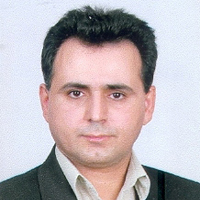Analysis and Distribution of Hydraulic Flow Unit and Electrofacies in the Framework of Sedimentary Sequences in One of the Gas Fields in Northeastern Iran
Author(s):
Article Type:
Research/Original Article (دارای رتبه معتبر)
Abstract:
Shurijeh Formation with Early Cretaceous (Neocumin-Barmin) age is one of the most important clastic reservoir rocks in northeastern Iran. By combining core information, petrographic study and application of petrophysical logs and data obtained from core analysis (porosity and permeability) of hydraulic flow unit and Electrofacies in the sedimentary sequence of Shurijeh Formation in five wells field were identified. The purpose of this study is to survey relationship between hydraulic flow unit and Electrofacies with the position of sequences (sequences and system tracts) and zonation of sedimentary sequences of Shurijeh Formation in the study reservoir. Based on the porosity and permeability data obtained from the core analysis, four hydraulic flow units were determined using the Flow zone indicator method. The fourth Electrofacies was determined based on gamma, neutron, density, sound and effective porosity logs obtained from possible evaluations using MRGC clustering method. Afterwards, the Hydraulic flow units and Electrofacies determined in the framework of sedimentary sequences were used and their distribution in the reservoir and field was determined to provide a clear match between the reservoir zones and the sequence stratigraphic framework. Finally, petrophysics (micro conglomerates, sandstones, and Sandy Dolomitic Ooid Grainstone / Hybrid) are associated with high-energy braided river environments and the high-energy section of the lagoon to Barrier Tidal or shoal, the best reservoir units are in the sedimentary sequence of zone D, B and the middle part of zone C (C2). On the other hand, petrophysics (Claystone/shale, dolomadstone sandy) related to low-energy environments of Braided river (floodplain), meandering river and superatidal stream (above tidal), the Poorest reservoir unit of these sequences in zone A, E sediment sequence and alternately formed in zones C and D.
Keywords:
Language:
Persian
Published:
Petroleum Research, Volume:32 Issue: 123, 2022
Pages:
3 to 18
https://www.magiran.com/p2478782
سامانه نویسندگان
مقالات دیگری از این نویسنده (گان)
-
Dolomitization models and related fluid evolution in the carbonate platform of the Asmari Formation
Armin Omidpour *, Roghayeh Fallah-Bagtash, Hossain Rahimpour-Bonab, Reza Moussavi-Harami, Asadollah Mahbobi
Journal of Earth Science Researches, -
Modification of Winland Rock Typing Based on Reservoir Quality and Production Parameters in Carbonate Rocks
Kazem Saadat, Hossain Rahimpour-Bonab *
Petroleum Research,



